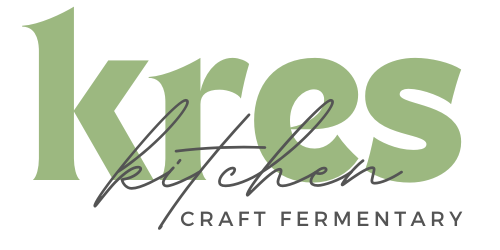Six Local Exotics we Grow for the Ultimate Gourmet Sauerkrauts
“If you can’t buy it, grow it.”
The catalyst for growing local exotics had more context than this; but the fundamentals are right. Sure, we could source non-native ingredients for our krauts without too much rigmarole; but getting these fresh foods in the condition we wanted was much more complicated. We identified several limiting factors related to quality. These are the main ones:
Contamination with synthetic fertilizers and sprays,
Poor nutrient content because of degenerative farming practices,
Over or under ripeness,
Less than ideal growth stage at harvest for our intended use (e.g. mature ginger vs our preferred baby ginger),
Post-harvest irradiation impacting the fermentative ecology, and finally,
Long wait (storage) times between access to ingredients and the commencement of fermentation. Food quality begins to degrade at the point of harvest.
Imagine what these variables can do to a production plan - ugh! Around the same time, we were working on sustainability within our integrated farm-to-ferment model. If we could reduce fresh food transit over long distances, we wanted to.
All these issues stacked-up… and motivated.
Experimentation began in our soil starting with local citrus and ginger. I would not characterize this adaptation process as easy peasy, but with patience and trust in nature’s capacity, we learned. Steady practice, consistent documentation, and incremental improvements helped us grow and expand. Today, I’m beyond grateful for the ability to successfully nurture exotic fruits and vegetables locally. The impact on sauerkraut flavor and quality is off the charts. Our customers seem to agree. Just like fine wine, I believe that the artistry of flavor is in the cultivation. When tillage begins, culinary arts follow; the two cannot be detached.
We’re currently growing 6 exotics in Northeast Ohio. Not all have been used as ingredients in our ferments - not yet. They’re considered “exotic” because these plants are typically cultivated in faraway climates and cultures, not in Northeast Ohio. We’ve learned to increment small adaptations in cultivation techniques to boost reliable productivity - locally. For example, we cultivate citrus in containers so the trees can be overwintered in temperate conditions. Our container soil is managed in the same way as all other grow spaces - regeneratively. In spite of these adaptations, we will never shift the compendium of environmental factors that drive things like flavor; our local terroir. Northeast Ohio terroir provides a sense of place where culinary adventures can include local exotics. This is our way.
Thinking more… I would update that ‘ol adage to more accurately reflect our times. Since we can “buy” just about any fruit/vegetable at any time of the year, it’s not about availability any more. So my way of thinking is… “If you can’t buy the finest quality, grow it yourself!”
To home krauters - I hope this inspires you to get growing and maybe even consider a few plants you haven’t tried.
To our loyal customers - thank you! For trusting us with your food choices and for supporting us with your purchases. Our vision for a local farm-to-fermentation model is expanding and we are so grateful for your endorsements.
Kraut on!
© 2025 Kres Kitchen LLC. All rights reserved.






